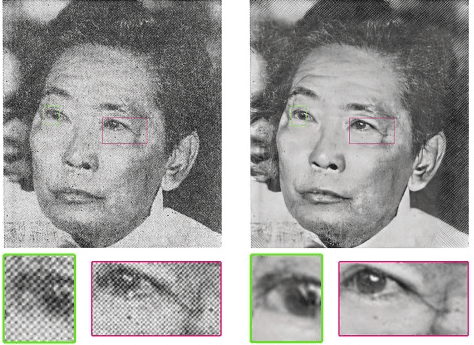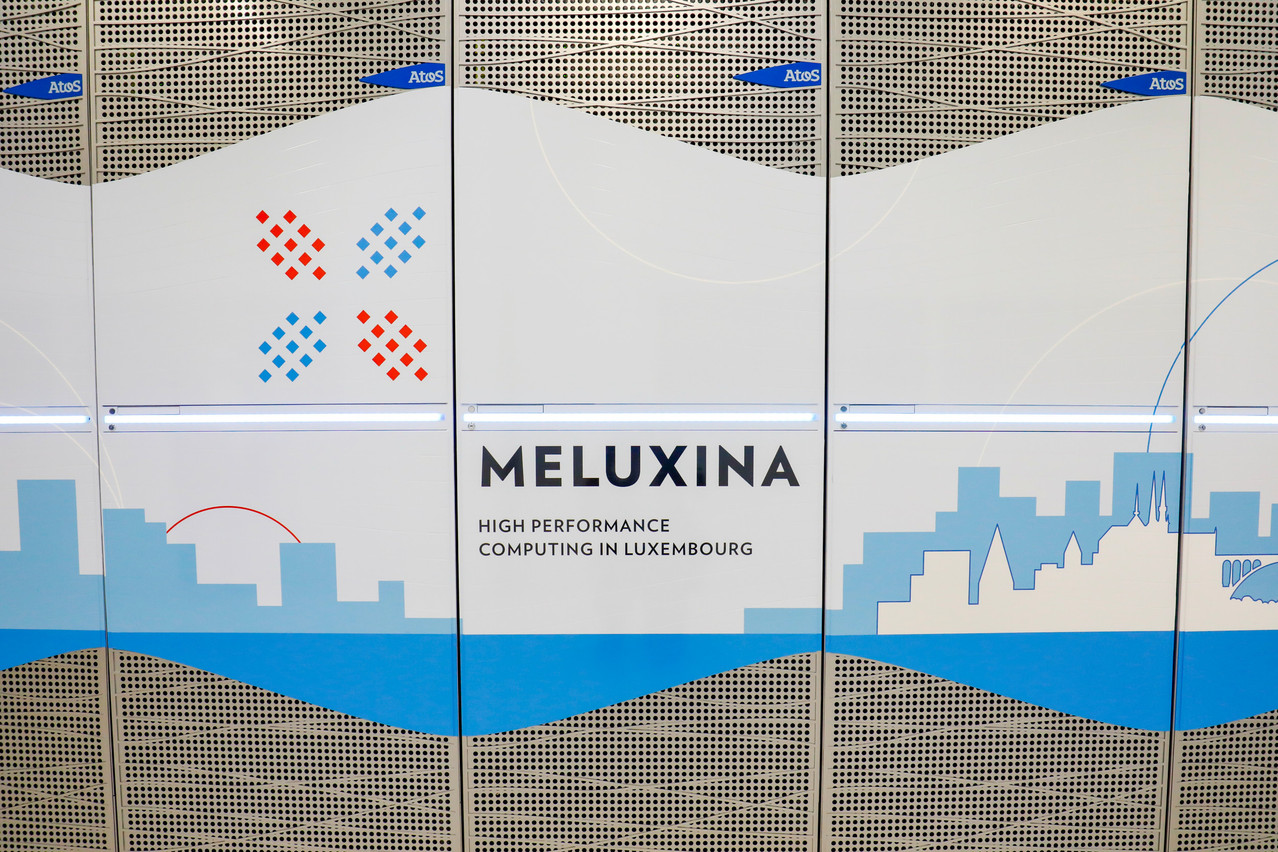This is not physics, materials science or advanced chemistry - fields traditionally associated with supercomputers. The Spresso project is the result of cooperation between Meluxina, the Bibliothèque nationale du Luxembourg (BNL) and researchers from the Centre pour l'Histoire contemporaine et digitale (C2DH), as well as from the computer science department of the University of Luxembourg. It aims to "explore the large-scale automatic enhancement of historical newspaper photographs from the 20th century by means of deep learning algorithms", explains the University.
The aim is to facilitate the work of historians, for whom the press photographs from a specific period are an essential source of research. However, back in the day they were printed using a process called "halftone", the quality of which is not ideal, with its pattern of dots.

The Spresso project eliminates quality-reducing patterns from 20th century press photographs. (Photo: Uni.lu)
Applicable to over 3 million images
The project focused on digital copies of halftone images provided by the Impresso project, a cooperation between C2DH, the University of Luxembourg, the EPFL in Lausanne and the University of Zurich, as well as a wide range of archives, libraries and newspapers in Luxembourg and Switzerland. From these, the algorithm creates new synthetic images by removing patterns that reduced their quality.
After testing different algorithms on a set of 10,000 images, former computer science student Dany Pais da Silva, under the supervision of Professor Luis Leiva, implemented a prototype pipeline for the conversion of historical images on the university's high-performance computing facilities.
With the support of LuxProvide engineers, the team was able to transfer the process to the Meluxina supercomputer, allowing it to be scaled up to apply to over three million images. "Getting access to the raw images was a challenge for us, as we had to transfer them from their original source to Meluxina and then back to the university premises”, explains the professor.
The new dataset will be fed back into the Impresso application to provide historians and the general public with these higher quality images.
This story was first published in French on . It has been translated and edited for Delano.
